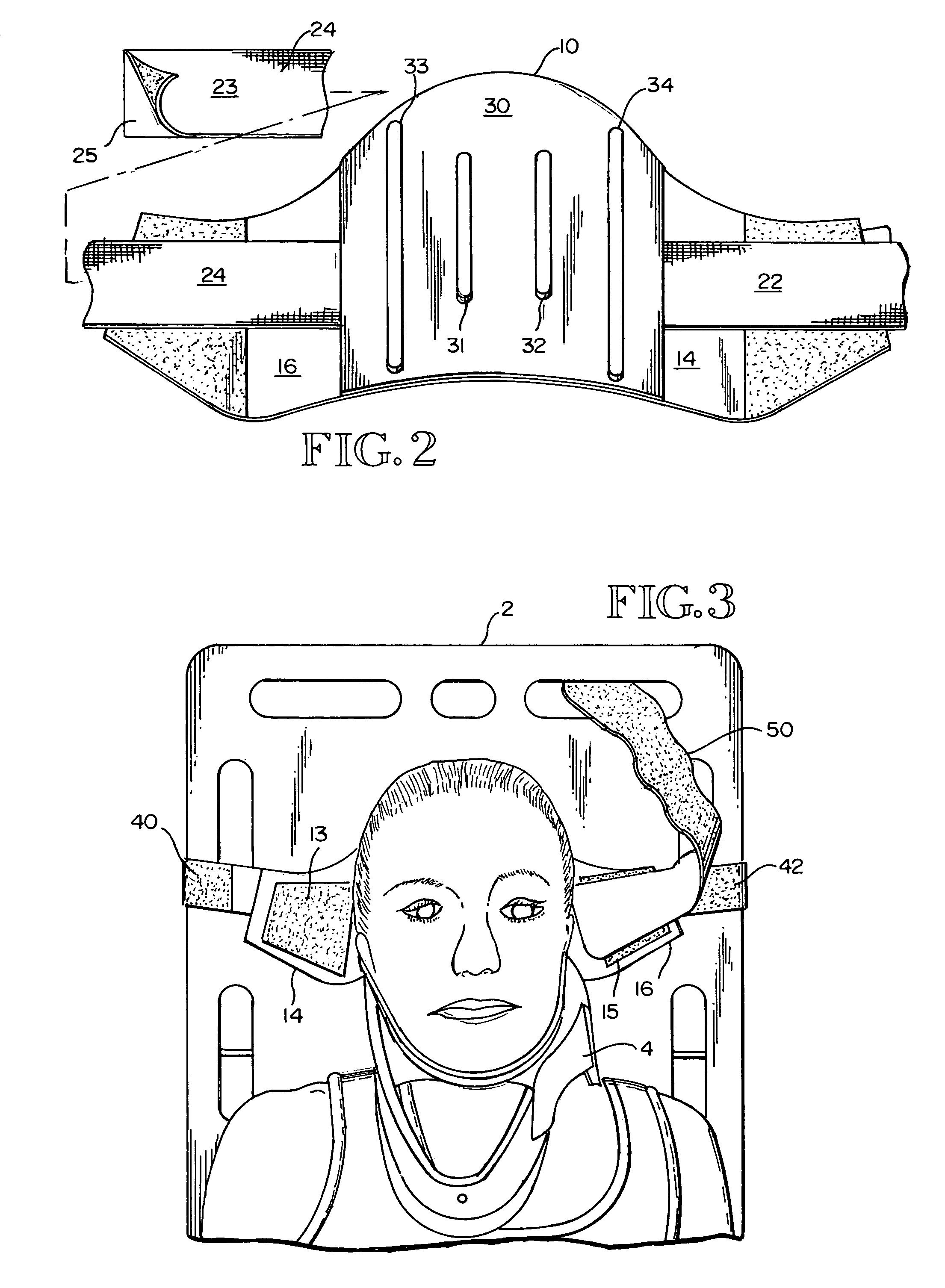Method and device for stabilizing a patient's head on a spine board
a technology for stabilizing the head and spinal cord, applied in the field of head or cervical immobilization devices and apparatus, can solve the problems of inability to determine the extent, if any, of damage, and the device cannot move relative to the spinal cord, so as to prevent lateral and elevating movement of the head, prevent further injury, and minimize the effect of injury
- Summary
- Abstract
- Description
- Claims
- Application Information
AI Technical Summary
Benefits of technology
Problems solved by technology
Method used
Image
Examples
Embodiment Construction
[0036]Turning now to the drawings, the devices that are the subject of the current application will be described in preferred embodiments by reference to the numerals of the drawing figures wherein like numbers indicate like parts.
[0037]FIG. 1 shows a preferred embodiment of a device that is the subject of the current application. The device is comprised of the head harness 10, the forehead strap 50, and strap packets 5 and 6, which contain a chin strap, a crown strap, and a lateral stabilization strap.
[0038]The spine board 1, is a rigid, generally rectangular shaped board constructed from wood or other suitable material. Most spine boards have a plurality of elliptical openings 2 along the lateral edges and a plurality of elliptical openings 3 at each end. These elliptical openings function as hand holds when a patient is being transported.
[0039]The head harness 10 of the depicted embodiment is ergonomically shaped and is designed to support a patient's head as he or she lies on a ...
PUM
 Login to View More
Login to View More Abstract
Description
Claims
Application Information
 Login to View More
Login to View More - R&D
- Intellectual Property
- Life Sciences
- Materials
- Tech Scout
- Unparalleled Data Quality
- Higher Quality Content
- 60% Fewer Hallucinations
Browse by: Latest US Patents, China's latest patents, Technical Efficacy Thesaurus, Application Domain, Technology Topic, Popular Technical Reports.
© 2025 PatSnap. All rights reserved.Legal|Privacy policy|Modern Slavery Act Transparency Statement|Sitemap|About US| Contact US: help@patsnap.com



